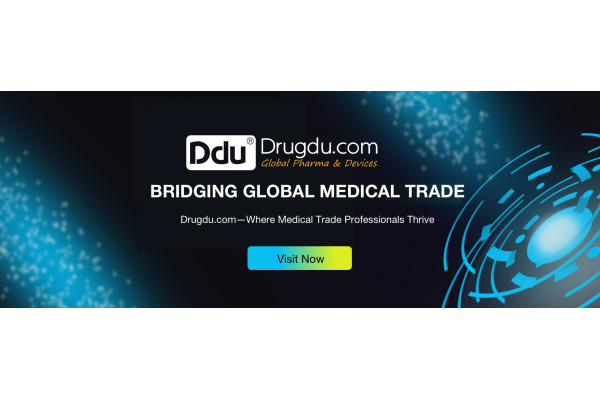【EXPERT Q&A】What is the current outlook for drug registration?
August 1, 2025
Source: drugdu
 151
151
Drugdu.com expert's response:
The overall prospects for drug registration are positive, driven by factors such as policy support, market demand, improved review efficiency, accelerated internationalization, and innovation-driven development. The industry is rapidly advancing toward high-quality, high-efficiency, and internationalized growth. However, it also faces challenges such as R&D investment, market competition, and regulatory changes. Below is a detailed analysis:
I. Dual Drivers of Policy Support and Market Demand
Policy Support: The National Medical Products Administration (NMPA) has approved 35% more new drugs through the priority review pathway year-on-year, with anti-tumor drugs accounting for 41%. This policy orientation has significantly accelerated the approval process for innovative drugs, creating a favorable policy environment for drug registration.
Market Demand: With an aging population and escalating health needs, the pharmaceutical market continues to expand. By 2025, China's pharmaceutical market size will exceed RMB 1.6 trillion, representing an 8% year-on-year increase, providing vast market space for drug registration.
II. Enhanced Review Efficiency and Process Optimization
Review Efficiency Improvements: The NMPA has continuously refined drug review and approval procedures and rules to enhance R&D quality and efficiency. For example, the standard review cycle has been shortened from 200 working days to 130 working days, achieving a 35% reduction in process time. The average duration for priority review projects has decreased from 639 days to 458 days, marking a 28.3% reduction in review time.
Process Optimization: The National Institutes for Food and Drug Control (NIFDC) released the Revised Guidelines for Drug Registration Inspection Procedures and Technical Requirements (2025), further optimizing drug registration inspection procedures by reducing sample quantities and shortening inspection timelines. For instance, inspection timelines for priority review and approval products have been shortened by 10 working days, while those for clinically urgent, overseas-approved rare disease drugs have been reduced by 20 working days.
III. Accelerated Internationalization and Enhanced Global Competitiveness
Accelerated Internationalization: Overseas revenue for Chinese pharmaceutical companies has surpassed RMB 100 billion, with biologic drug exports growing by 50% year-on-year and finished dosage form exports accounting for a majority share for the first time, surpassing raw material drug exports. By the end of 2025, 147 drugs had obtained WHO prequalification, a threefold increase from five years ago.
Enhanced Global Competitiveness: As internationalization accelerates, Chinese pharmaceutical companies are steadily improving their competitiveness in the global pharmaceutical market. However, international market access barriers remain high, with registration success rates in European and U.S. markets at only 60% of domestic levels, necessitating greater emphasis on regulatory policy interpretation and compliance management during international registration processes.
IV. Innovation-Driven Development and Increased R&D Investment
Innovation-Driven Development: The acceleration of innovative drug R&D has become a core driver of industry growth. According to NMPA statistics, 43 innovative drugs were approved in the first half of the year, a 59% year-on-year increase, nearing the full-year total of 48 innovative drugs approved in 2024. Sales of innovative drugs grew by 24% year-on-year, far outpacing the 2% growth of traditional generic drugs.
Increased R&D Investment: Guided by policies, companies have持续提升 their R&D investment intensity. The industry's overall R&D expenditure as a percentage of revenue has reached 6.8%, providing a solid R&D foundation for drug registration.
V. Challenges and Opportunities Coexist
Challenges: Despite the positive outlook for drug registration, the industry still faces challenges such as high R&D investment requirements, long development cycles, and significant risks; intense market competition, particularly in the innovative drug sector; and rapidly evolving regulatory policies that require close monitoring and timely strategic adjustments by companies.
Opportunities: With the implementation of policies such as improved medical insurance payment systems and expanded applications of real-world evidence, drug registration will encounter more opportunities. For example, following medical insurance negotiations, drug usage volumes generally increased 23-fold, driving market penetration for related companies to 1.8 times the industry average.

Read more on
- 【EXPERT Q&A】What are the requirements for quality management in medical device production? January 7, 2026
- 【EXPERT Q&A】What are the requirements for the production of Class I medical devices? January 5, 2026
- 【EXPERT Q&A】What qualifications does a medical device company need to obtain? January 2, 2026
- 【EXPERT Q&A】What Do Class I, II, and III Medical Devices Specifically Refer to in the Classification of Medical Devices? What Are the Classification Bases? December 31, 2025
- 【EXPERT Q&A】What are the main testing standards for medical devices? December 29, 2025
your submission has already been received.
OK
Subscribe
Please enter a valid Email address!
Submit
The most relevant industry news & insight will be sent to you every two weeks.



